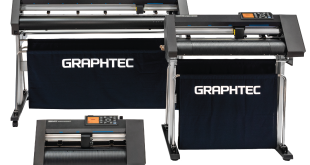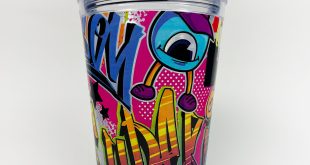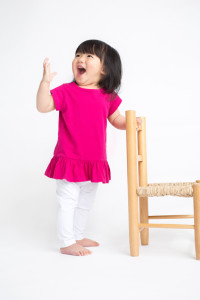
According to market research company, Euromonitor, the UK children’s clothing market is worth £5.6bn and is estimated to grow to £5.9bn by 2017. P&P editor MELANIE ATTLESEY spoke to Larkwood and Mantis World to see how the children’s printwear market compares to the retail market.
Both Larkwood and Mantis World are experts in their field. Both have been supplying childrenswear to garment decorators for over 10 years. They are well placed to provide an insight into the children’s printwear market.
Market growth
Euromonitor attributes the growth in the children’s clothing market to various social factors, including a rapidly increasing birth rate, parents having children later in life and baby-boomers with more disposable income at their finger tips.
Katie Stewart, brand manager for Larkwood, agrees with Euromonitor, and adds that another main factor leading to a growth in the market is the speed at which children outgrow their clothes. She adds: “Consumers are much more likely to make a purchase based on current trends and this trend awareness is reflected in garment purchases. Parents are also more likely to put their children’s apparel needs ahead of their own. If children’s garments can be personalised then this adds more appeal to the product.”
Compared to other sectors in the printwear market, Kirsty Macdonald, Mantis World brand manager, believes that kidswear is not seeing the same level of growth at present. She explains: “It could be said it is ‘forgotten’ sector with few suppliers seeking to afford the sector the same care and attention given to menswear, womenswear, babywear and hats/ accessories. The sector is dominated by school appropriate basic products in traditional school colours with little to no reflection of what’s actually happening out there in retail.”
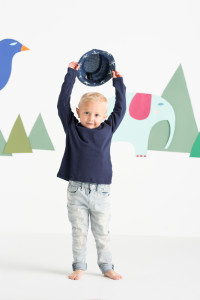
Due to dissatisfaction with the way its childrenswear line was performing in terms of sales, Mantis World decided to review what its kidswear offering in 2014. “What we very quickly realised was that the printwear market didn’t echo what was happening in successful kidswear retail in terms of segmentation nor product offer. The printwear market, and indeed our own Humbugz range at the time, was assuming that 12 year olds want to wear the same style of clothing as two year olds, and girls the same style and same fit as boys. This is almost the opposite to the retail sector which, as can be seen in almost any childrenswear retailer from supermarket basic to high-end designer, seeks to differentiate style and fit by gender and also age thus offering a much more targeted, comfortable, credible and relevant range of shapes and fits. Although, there is nothing to suggest that a ‘conventional’ or ‘stereotypical’ male motif can’t be placed on a girls T shirt with curved hem,” says Kirsty.
She adds that the girls’ clothing sector is the largest retail kidswear sector in terms of market value, as girls are typically more interested in fashion from a young age. The printwear market, on the whole, doesn’t recognise this and so, arguably, doesn’t offer the customer that they want.
Both brands expect there to be growth in this sector in the coming years, just like the retail market.
Kirsty says: “In terms of speed and extent of growth, this will depend upon the brands and suppliers within the sector reviewing their kidswear offer to ensure it’s relevant to the audience and the customers. We, as childrenswear brands, need to provide some excitement and newness to the sector to stimulate interest again. We need only look at the mens, womens and babywear market to understand that product is key here and that attention to detail, to trends and to quality can ignite interest, and subsequently sales.”
Katie adds: “We expect the children’s printwear market to grow year on year as the demand for children’s clothing does not seem to halt due to the driving factors such as style savvy consumers, the trend of people having children later in life when they are more financially secure and of course children outgrowing clothes.”
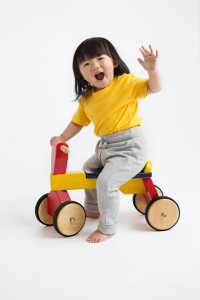
Clever designs
The retail market has been vastly affected by the rise in fast fashion – that is clothing manufactured quickly at a low cost. But what about the printwear market?
“The economic downturn undeniably had an effect on kids sales, with more retail sales being picked up by the lower-priced/ grocer sector,” explains Kirsty. “Modern kids like fashion and trends. They will want to shop where they can purchase items that suit their wants. If we, as a printwear market, don’t cater for trends or fashion, then the sector will suffer. However, by offering cleverly styled garments that offer decorators an opportunity to print, or embroider, or embellish, modern designs, our market can compete. Mantis World’s aim is not to compete with fast fashion. We believe in careful design and development that will last. Brands in our market cannot change their ranges completely every year. It’s not economically viable nor would it be much appreciated by the printwear market. What we can do is look to offer styles that we believe will remain credible and relevant for a longer period of time. We spend much time in reviewing what’s happening in retail and interpreting what styles will have come and gone within a season, and those that will have a longer lasting appeal while still appearing modern.”
Katie makes the point that the children’s printwear market is sold into various different sectors such as nurseries, schools and children’s boutiques as well as the personalised online business sector. “These sectors require high quality resilient garments which is where cheap/fast clothing is not appropriate and does not meet the requirements,” she adds.
Internet and social media
As with most sectors of society, the internet and social media are taking over. Most printwear suppliers use their own websites as information providers to inform customers of styles, colours and sizes available in their products.
Katie explains the Larkwood website plays an important part in the brand’s communication strategy. “The website not only allows our customers to view the entire range, but provides important information relating to sizes, pantones, wash care instructions and garment features. The Larkwood website also serves as a gateway to our image cloud where garment decorators can download images of the Larkwood products on models and on a mannequin in every colour.”
Katie estimates that around 67% of visits to Larkwood’s website are made via a desktop, while 26% are made via a mobile device and 7% on a tablet.
“Having a website as up to date as possible is essential as garment decorators can find the latest information without contacting their distributor”, says Katie.
But what about brochures and catalogues, do they still have their place in today’s technology led world. Katie believes so. “They are not only used to view the range and garment information but as a workbook and an additional sales tool,” she says. “When demonstrating the range to potential customers it can be easier to allow customers to view a brochure rather than direct them to a web page, and having a brochure can be used to initiate conversations with potential customers.”
Trends
Just like the retail sector, trends in children’s printwear come and go.
Katie says that children’s fashion tends to emulate adult’s fashion and this micro fashion is reflected in sales. For examples, the Larkwood LW061 leggings are a big hit, and with leggings still very prominent in the high street sales are likely to increase. In the baby clothing market bandana bibs are seen as a trendier style and with the Larkwood LW081 reversible bib garment decorators have a variety of colours to choose from and the added advantage of promoting the style as reversible.
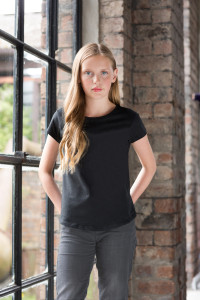
Kirsty adds that for older children black, grey and white are popular colours. Whereas younger children tend to enjoy brighter shades. Pink, although still in the top sales bracket for younger girls, has seen a nose dive in terms of popularity for older girls.
Next year will see a lot of laid back casual styles entering the retail market, says Katie, including joggers, all over printed T shirts and slogan sweatshirts. The LW006 Crew Neck Sweatshirt can be printed with any form of decoration which reflects the current high street trend. “This casual trend will allow garment decorators to be creative in their design. Preppy Americana and tropical themes, pastel colours and blues and a sense of playfulness is becoming integral to the look such as frills and contrasting colour,” she explains.
To reflect this trend Larkwood has added three new styles to reflect these high street trends. The girly frill t-shirt (LW026) a great fashion statement. The unisex jogger (LW062) and the fleece all in one (LW070) which comes complete with ears. These styles will be available from January.
On a final note Katie points out that it is important to keep up with trends and colours that dominate the children’s clothing market. “However it is also vital to consider the printability of the garment,” she adds. “The printwear market tends to follow trends and colours that are more likely to become staple styles rather than fads therefore not all trends will filter through.”
 Printwear & Promotion The Total Promotional Package
Printwear & Promotion The Total Promotional Package
